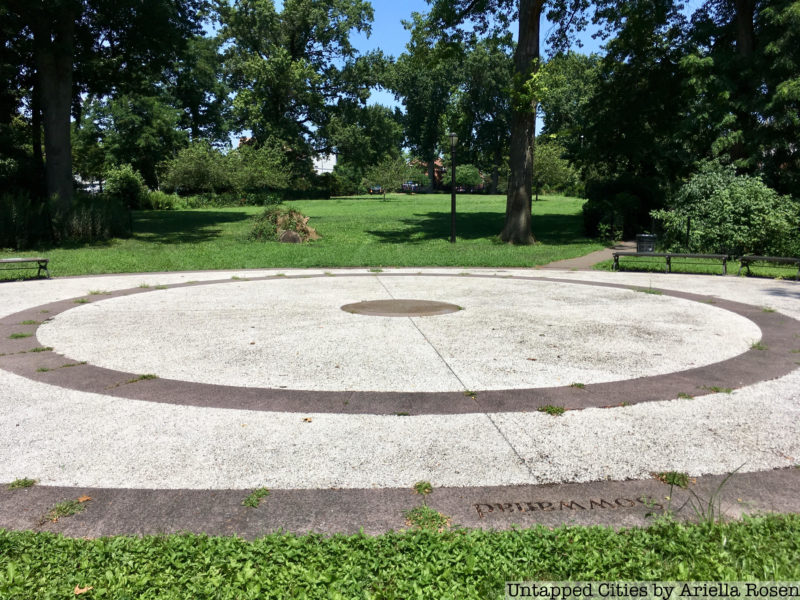4. There Once Was a ‘Colored Cemetery of Flushing’

The Olde Towne of Flushing Burial Ground—previously known as the “Pauper Burial Ground,” “Colored Cemetery of Flushing” and “Martin’s Field”—once served as the final resting place for between 500 to 1,000 individuals. The Queens Department of Parks acquired the property on December 2, 1914, and under the leadership of Parks Commissioner Robert Moses, a section of the land was turned into a modern playground in 1938. During the excavation, however, WPA workers discovered lasting evidence of a burial ground.
According to local historian George W. Pople, Flushing had suffered from a cholera epidemic and a smallpox epidemic in the 1840s. In order to ensure that the bodies of the victims would not contaminate church burial grounds, the town purchased a section of land from the Bowne family to be used as a separate public cemetery; it temporary fell out of use with improved hygiene practices, but would be resurrected for use by the African American community in the late-1800s. Up until the cemetery was closed in 1898, the NYC Department of Parks reveals that 62 percent of the buried were African American or Native American (34 percent were unidentified).
A paved area now exists at the site, as well as a historic wall that is engraved with the names from four remaining headstones that were uncovered.





